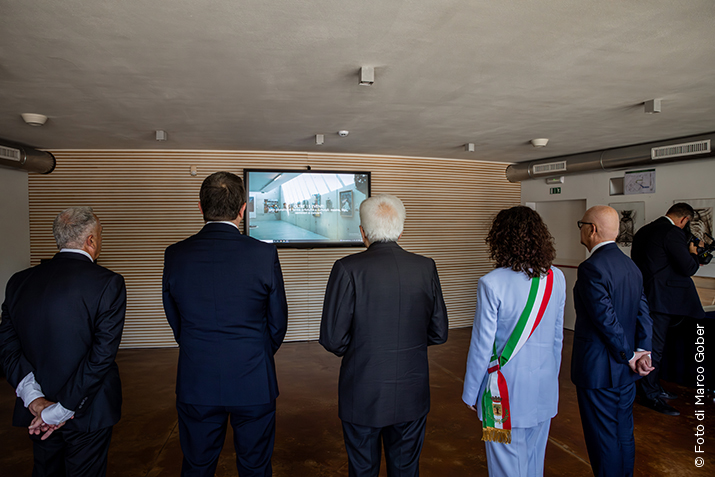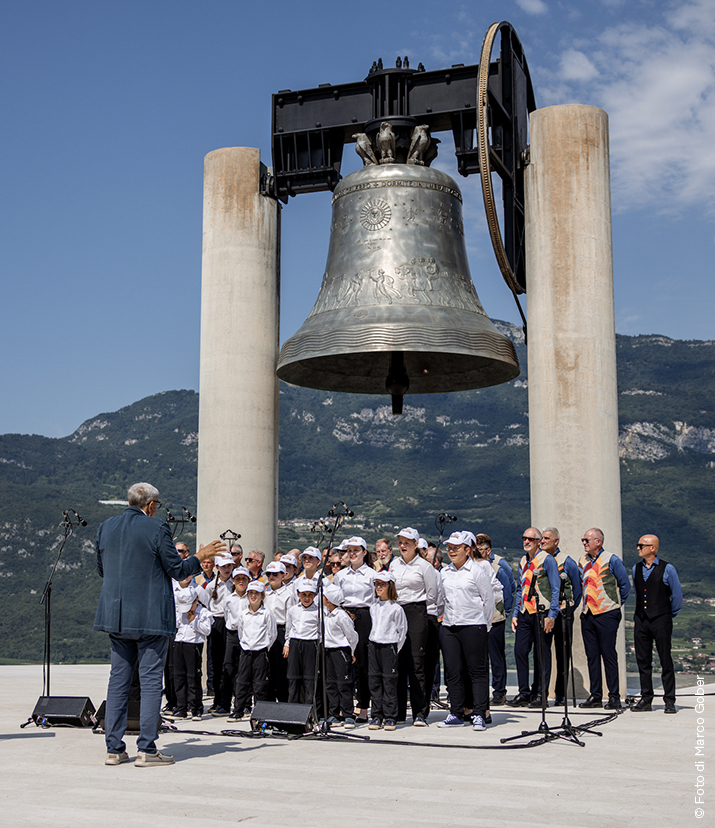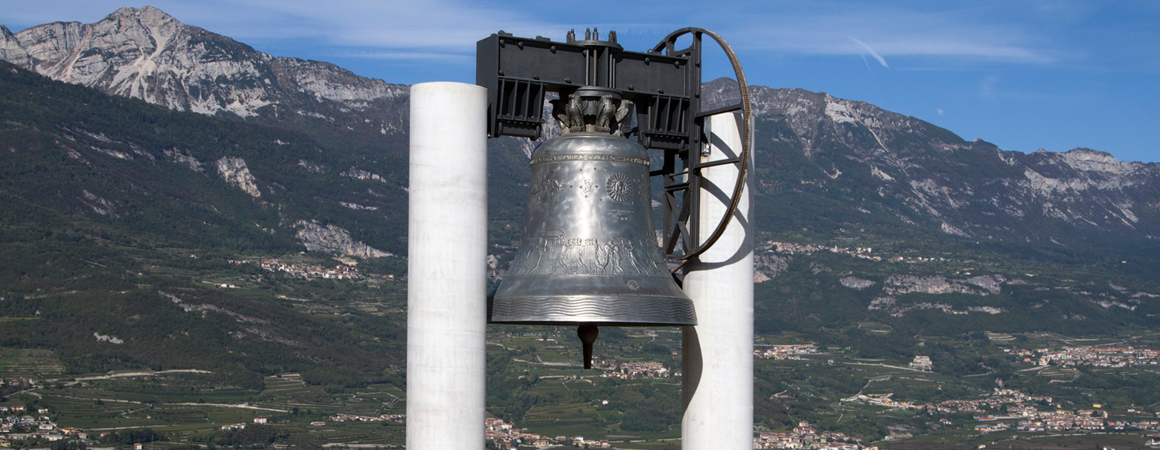BEHIND THE SCENES OF A HISTORIC EVENT
Inviting the President of the Italian Republic to an event is always a captivating prospect. It’s the kind of dream people talk about without really knowing what it would mean if it ever came true. And in most cases, it doesn’t. Everything begins with a letter to the Quirinale. Months pass. People stop thinking about it, or at least stop mentioning it. There is no room for assumptions, and it’s pointless to speculate. But then, sometimes, a brief yet invaluable message arrives: the event is confirmed. That is when you begin to grasp the scale of it all and become familiar with a phrase that starts to appear everywhere: “as required by protocol.”
At events like this, what is visible from the outside is only a fraction of what is actually happening. Everything in front of the cameras unfolds with apparent ease. Behind the scenes, however, things are far more tense, governed by strict rules that must be followed to the letter.
On the day the Campana dei Caduti had the honour of hosting President Sergio Mattarella, the Colle di Miravalle filled with professionals in dark suits. Clear and precise in all communication, they are used to saying things once and saying them with a firm politeness that leaves no room for negotiation. Sometimes they admit that what they are about to say may sound obvious, but they are keen to avoid any doubt. “No one may walk in front of the President,” they remind you, “and no one may approach the Head of State.” They say it with a smile, and that is enough.
A few hours before the ceremony, the Viale delle Bandiere opens — the only entrance available to the public. Meanwhile, the venue interiors are manned by people with discreet earpieces. Even if you cannot see them, you always have the sense that someone is watching. Outside, there is constant movement. Hundreds of people have booked their place on the Colle di Miravalle through the Foundation’s website, submitting all the necessary documents. They have queued for shuttle buses from the city centre and endured sweltering heat. But there is one more step. Everyone has to stretch out their arms and pass through a metal detector. They do it all smiling, fully aware that they are participating in a historic event.
Visitors are not expected to know the finer details of the procedure, and it is perfectly normal for someone to have scheduled a visit to the Foundation or the Centenary exhibition before the President’s arrival. This is when a phrase we normally associate with crime dramas slips into reality: “the area has been secured.” That is why access is no longer possible, even if some people are already inside. It’s not a matter of good or bad; it’s simply about avoiding risks. If you are in the restricted area, you may find yourself face-to-face with two tall guys in unmistakable uniforms. Everyone knows the Corazzieri are tall, but standing underneath them unexpectedly forces you to rethink the meaning of the word “height”. They don’t act superior, but stepping aside comes naturally.
Time passes slowly. Almost three hours have gone by since the first shuttle arrived at 7:45 am, yet the key moment still seems a long way off. The President is scheduled to arrive at 12:30 pm, although it could happen a little earlier or a little later. “Always allow 15 minutes either side” is another phrase that circulates among staff.
By now, half the open-air theatre overlooking the Bell is full. Everyone is wearing the commemorative cap handed out on arrival, along with a bottle of water bearing an image of the Bell and the city’s logo. The sun is beating down, and there is plenty of time to fill. Under Maria Dolens, the Minicoro di Rovereto and the Sant’Ilario Choir begin to take their places.
The children sing of peace, as they often do at Maria Dolens events, but this time feels different. They have been rehearsing the national anthem all week, even though they already knew it well. They will begin singing at exactly the right moment, without anyone announcing it. To keep the audience engaged, the younger children take turns with older singers who are just as enthusiastic. The repertoire includes songs about valleys, mountains, the soldiers who returned from war, and those who did not. It is a love letter to a land that gave so much to build a world where peace could be sung, and which has entrusted its children with the task of singing it.
A well-known journalist has come from Rome to host the event. Maria Concetta Mattei, a familiar face on television, calmly explains the meaning of the day and guides the schedule. She is composed and professional, aware that there is still a long way to go. Suddenly, however, time begins to accelerate. What had been moving slowly is now unfolding quickly. The singing stops and is replaced by polite but firm announcements. “We kindly ask all guests to take their seats and ensure that mobile phones are switched off.”
The President arrives. Local authorities greet him at the entrance. After the official photos, he steps into the Foundation atrium, where the President welcomes him with a selection of symbolic gifts, including a miniature of the Bell. A short video plays, condensing one hundred years of Maria Dolens into ninety seconds. Finished. Then it is time to visit The Myth of the Bell – One Hundred Years of Maria Dolens.
The curator, Chiara Moser, has just one minute to present the exhibition, but it is not enough. President Mattarella is curious. He wants to know the details. He wants to know why these particular works were chosen, what they mean in the Bell’s history. A few moments later, he signs the Visitors’ Book, writing a brief but meaningful phrase: “With full awareness of the hope represented by Maria Dolens.” And then it is time to move again. The final moment, almost private, is a walk along the Viale delle Bandiere. There are 106 flags, some representing recognised states and multilateral organisations, others representing unrecognised territories, persecuted ethnic groups or humanitarian organisations. There is no time to reflect on the moral commitment to the values promoted by the Foundation, as represented by the countries whose colours fly over the Colle di Miravalle. Nearly a thousand people are waiting to greet the President and show their admiration and affection. And there is no more time to write either. We have to get to the Bell before the President arrives. Once he is there, no one else will be allowed in. As required by protocol.
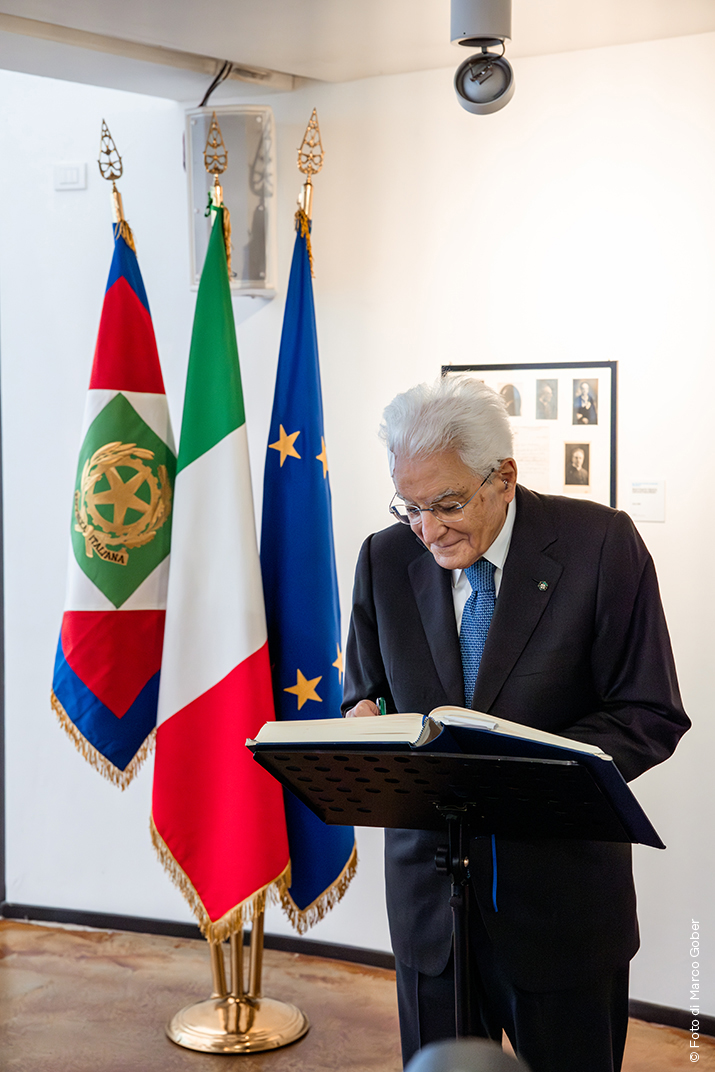
The President signs the Visitors’ Book
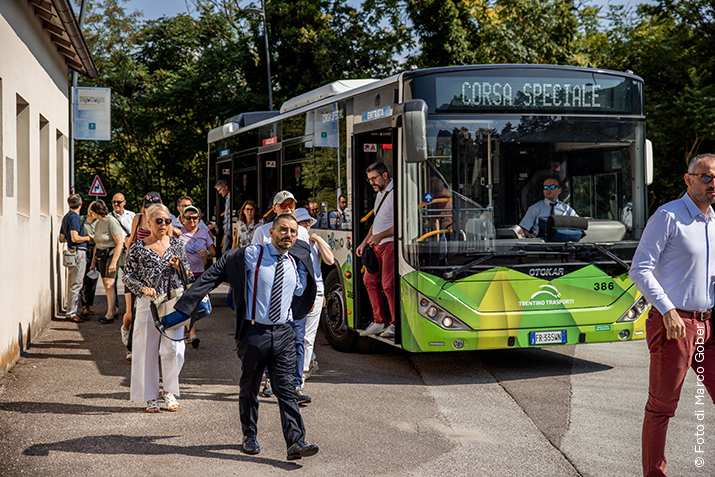
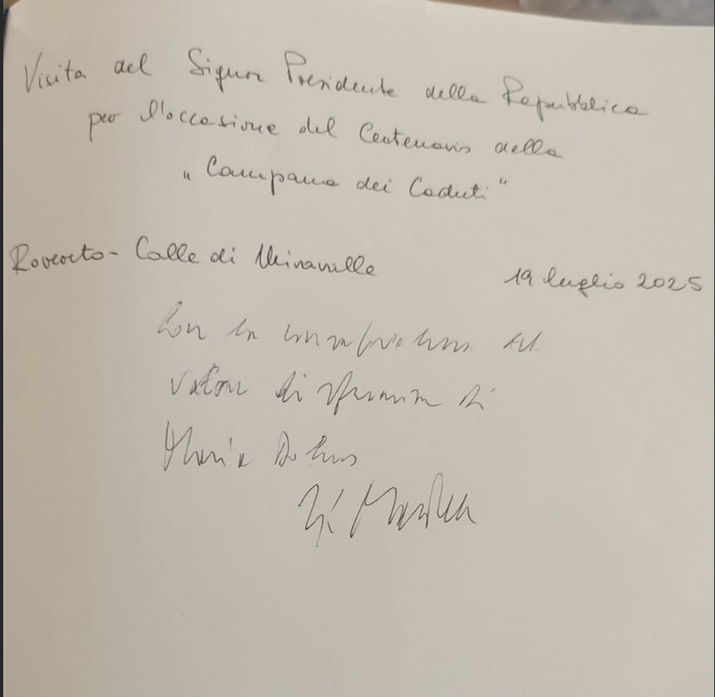
The page where President Mattarella wrote: “With full awareness of the hope represented by Maria Dolens.”

